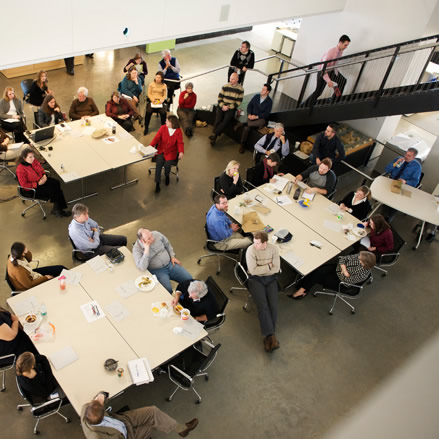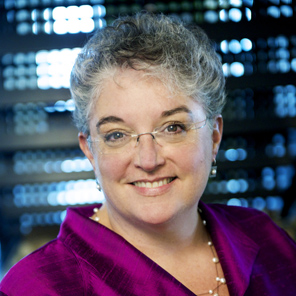by Rosa T. Sheng, AIA, LEED AP BD+C
Despite historically high numbers of women entering the profession, it is no secret that the top positions are still dominated by men and a culture of long hours and low pay threaten talent retention. The American Institute of Architects reports that only 19 percent of its roughly 81,000 members were women as of June, up from 11 percent in 1994. And only 12 percent of women architects serve as supervisors or licensed employers in architecture firms.
Equity in Architecture Survey Infographic by Atelier Cho Thompson
While there is a whale-list of challenges we currently face in achieving equity, we will rigorously seek out best practices and explore actionable solutions to overcome the disparities; implicit bias and in-group favoritism in hiring and promotion, women's salaries on average consistently less than men, and the negative impact of taking a leave of absence or working reduced hours (often resulting in reduced opportunities for leadership roles and meaningful work).
The NY Times article “To Rescue Economy, Japan Turns to Supermom” by Jonathan Soble explores Prime Minister Shinzo Abe’s national pledge to equity. His policies optimistically attempt to ease the way for women with more state-funded child care and other measures to foster “a society where all women shine” in spite of the country’s entrenched patriarchal societal and corporate norms. Soble also highlights that some private companies are initiating changes to work culture in hopes of jumpstarting economic recovery. In Obama's state of the union address this week, he canonized the need to adopt similar policies in the US. It is essential that each and every one of us advocate for these changes in the coming year. The most glaring example is that currently the US is the only developed nation that does NOT have government subsidized family leave.
There is a new movement emerging: beyond quotas and affirmative action backed by extensive studies that affirm the business case for equity, diversity and collaborative teams. The NY Time Article, Why Some Teams are Smarter than Others, discusses the positive outcomes of having teams with more diversity, empathy and social intelligence. The book Gender Intelligence by Barbara Annis and Keith Merron, a new mindset and effective approach to equity, is globally altering the workplace culture of major corporations. In addition to exposing the forces behind current gender inequality, they introduce game-changing principles that are inspiring a refreshing shift in thinking. The book highlights organizations that have made the transformation from a fixation on a quota-like mentality of "gender equality" towards a focus on gender equity; a philosophy that leverages the natural strengths, differences and potential of each gender to ultimately produce greater economic value and talent retention for the companies that integrate equity and diversity in their business model.
At a time when the American Institute of Architects recognizes the need for repositioning, providing greater impact and communicating value to the public we serve, we have a unique opportunity to be innovators. What can we learn from these new principles, research and case studies? How can we apply examples of best practices to innovate our often antiquated profession? We are at a point where many face an unsustainable business model and workplace culture directly attributed to the "Beaux-Arts" practice of charrette; the expectation of working long hours and up to the very last minute before a deadline.
Today, we are pleased to feature the first 4 Architecture firms that champion equity and share their insights to inspire best practices; Shepley Bulfinch, Architecture Plus, JG Johnson Architects and PIVOT Architecture.
Shepley Bulfinch's rich legacy of leadership in design innovation dates back to its 1874 founding by H.H. Richardson in Boston. Since its early years, an emphasis on teamwork characterized the firm's work style. Its cadre of loyal and experienced staff worked together to produce the quality buildings for which it had become known. In that spirit, work was usually attributed to teams, rather than to individuals, a tradition that became stronger with the firm's transition from family business to partnership, and its incorporation in 1972.
It wasn’t until the mid 1980’s that the firm promoted a woman to Principal. Today the demographic is dramatically different; of the 150 employees, 75 are women and of the 10 Principals, 5 are women. Office locations are in Boston and Pheonix. In 2004, Carole Wedge, FAIA became the first woman president in the firm's history. Since her election, Carole has championed the firm's commitment to sustainable design and a collaborative working environment that values its talent. In 2009, AIArchitect interviewed Carole about her inspirations for pursuing a career in architecture and her tenure at Shepley, which started as a clerk in the mailroom. Carole talks about the firm’s approach and policies that support equitable practice, including work-life flexibility. "The most important thing for us has been to give people flexibility to tell us what they need, and I think architecture is a field where it's pretty easy to give flexibility".
Denver-based JG Johnson Architects is an award winning hospitality and urban housing design firm that's also walking the walk. Of the 31 employees, 58 percent are women, 77 percent are licensed architects and 62 percent are in leadership positions. Nicole Nathan is part owner of JG Johnson Architects and is a licensed architect in Colorado and Texas. As Design Principal, Nathan ensures high-quality project design for both architecture and integrated interior design. Ms. Nathan shares that the firm supports a life-work balance that, if absent, would stall women in their middle careers. “The understanding that you can have a family and maintain your identity and value as an architect is what sets our firm apart,” Nathan said.
The firm’s culture encourages all its employees to keep up with their peers who are earning their licenses. “It’s motivating to watch others in the office go through it, and you’ve seen them be promoted and receive elevated roles in their projects,” said Anne Warner, an associate with the firm. “Women are driven to keep up with each other.” Heather Vasquez, another associate with the firm, agrees with that sentiment and notes that younger women often are promoted to management positions. “The leadership and management across the board is younger than at other firms I’ve worked at,” Vasquez said. “It brings new ideas and creative thinking that other firms lack.”
Jim Johnson, the firm’s founding principal, says the firm encourages the advancement of all employees based on merit. “We have been very fortunate to recruit and promote such a large percentage of highly talented and qualified female architects,” Johnson said.
Architecture Plus in Troy, New York is also a leader of design excellence and equitable practice with an employee focused, flexible work culture. When he started the firm with his partner Joseph Lomonaco 30 years ago, Frank Pitts, FAIA shares that (and AIA National 2nd Vice President for 2015) 3 of the first 4 people to join them were women. Frank believes that this, an early model of a transparent workplace with relatively flat hierarchy, a unique way of managing workloads, and their personal commitment to have a family life resulted in the supportive, flexible work/life culture that is baked in to the DNA of what the firm is today. "We've always had summer hours, flexible start and end times, comp time and technologies that allow folks to work from home." says Frank.
Of the 30 employees today, the majority of the architectural staff are women. In terms of leadership, 2 out of 7 Principals are women and 1 out of 3 Associates. Within the next 3 to 4 years, there is a scenario where the practice could be majority women owned and directed. Most enviable is the firms open support of taking a personal or medical leave and transitions (on and off ramping) back to full time employment without jeopardizing advancement opportunities or meaningful work of good design projects. Newly promoted Principal Mary Kate Young, AIA shares her own experience about the progressive culture.
"A flex work/life arrangement can be negotiated for almost anyone if it is desirable for the firm and the individual. We have had older principals make arrangements for shorter work weeks as they transition to retirement. So folks work offsite regularly or as needed if they have a sick child or a personal thing to take care of that requires working from home for a day. Mothers of small children have worked part-time. I worked part-time for 5 years and then worked full time but was not required to come to the office on Fridays while my children were younger."
Frank further reveals that this employee focused flexibility has resulted in a high retention rate AND a profitable design focused architectural practice with exceptional buildings and spaces for academic, healthcare and community clients. Many of these projects have received local, state, and national design awards.
Eugene, Oregon based PIVOT Architecture, was established in 1956 and is an award winning interdisciplinary practice that recently achieved LEED Platinum certification for Commercial Interiors for the firm's new office space. Of the 32 employees, 18 are women, including 10 architects and designers and 3 Associates. Among the 7 Principals, 3 are women including the recent promotion of Kelley Howell, AIA and Kari Turner, AIA as the newest Principals.
Kelley Howell has been instrumental in PIVOT landing a number of large projects including some in the higher education field. “I couldn’t have imagined a better group of people to take this next step with. I’m very excited about our work, our clients and our office. Ownership of course comes with additional responsibilities, but it also comes with the opportunity to shape and guide our future,” Kelley said. “PIVOT has always been a place where creativity and inspiration is nourished.”
A key component of PIVOT's success has been its work with transit agencies. Kari Turner as become an expert on transit architecture speaking at national conferences including Rail-Volution. Kari began her career at PIVOT prior to graduating with a Bachelor of Architecture from the University of Oregon. She started as a part-time administrative assistant in 1995 while she pursued her architecture degree and joined the firm as a full time designer after graduation. She was promoted to associate in 2007. “I feel like I have grown up with PIVOT,” Kari said. “I started working here in 1995 and have been mentored and guided by all the people who have worked in the firm from the beginning. I feel lucky to have found a place that has allowed me to grow professionally and as an individual for nearly 20 years. I can’t imagine what my life would be like if it didn’t involve PIVOT.”
Have an INSPIRE% Best Practice or Firm "Equity Champion" to share? Contact us!





















